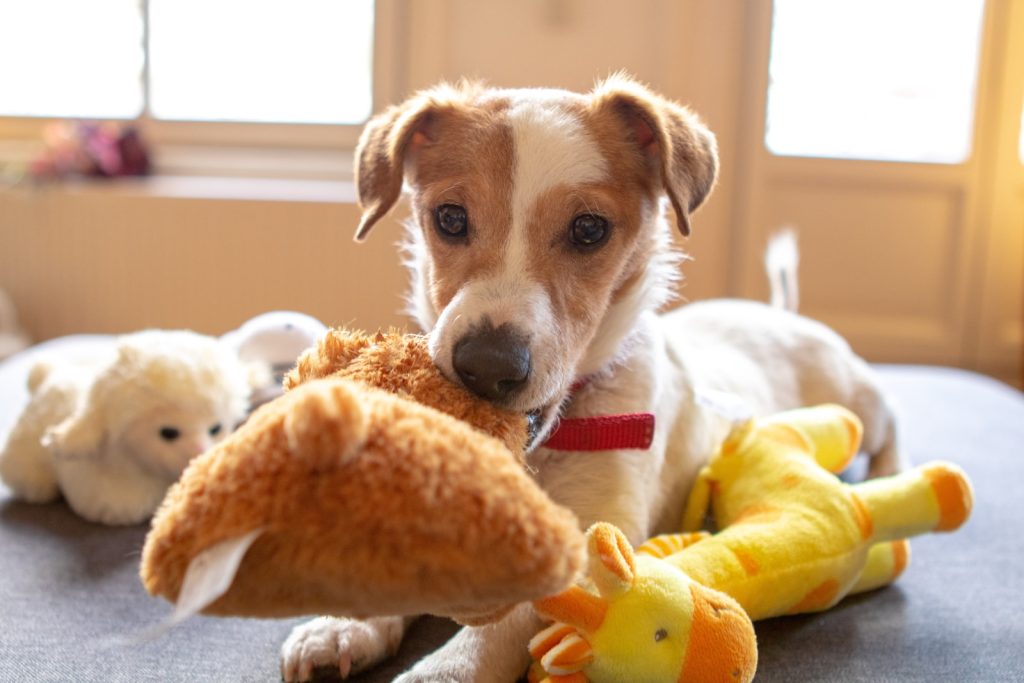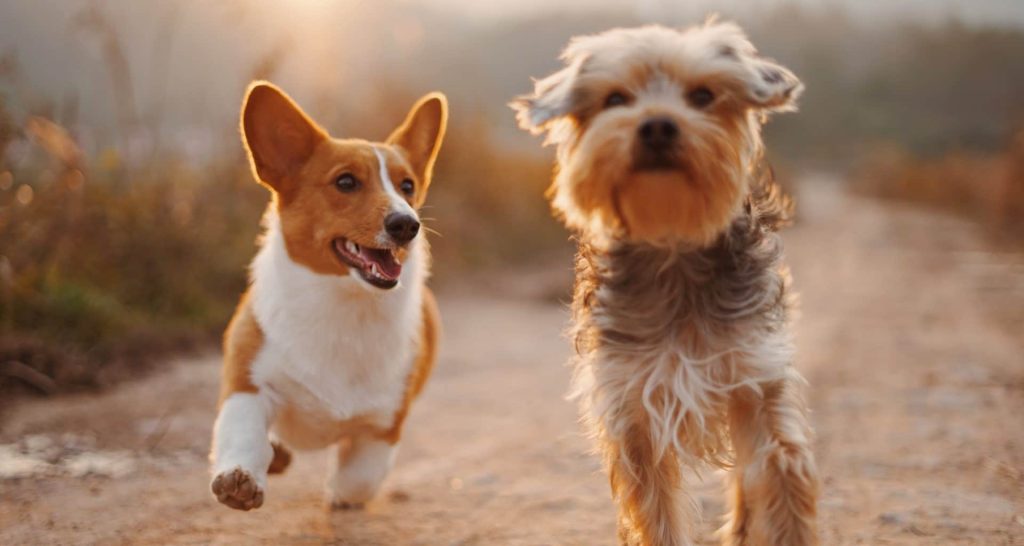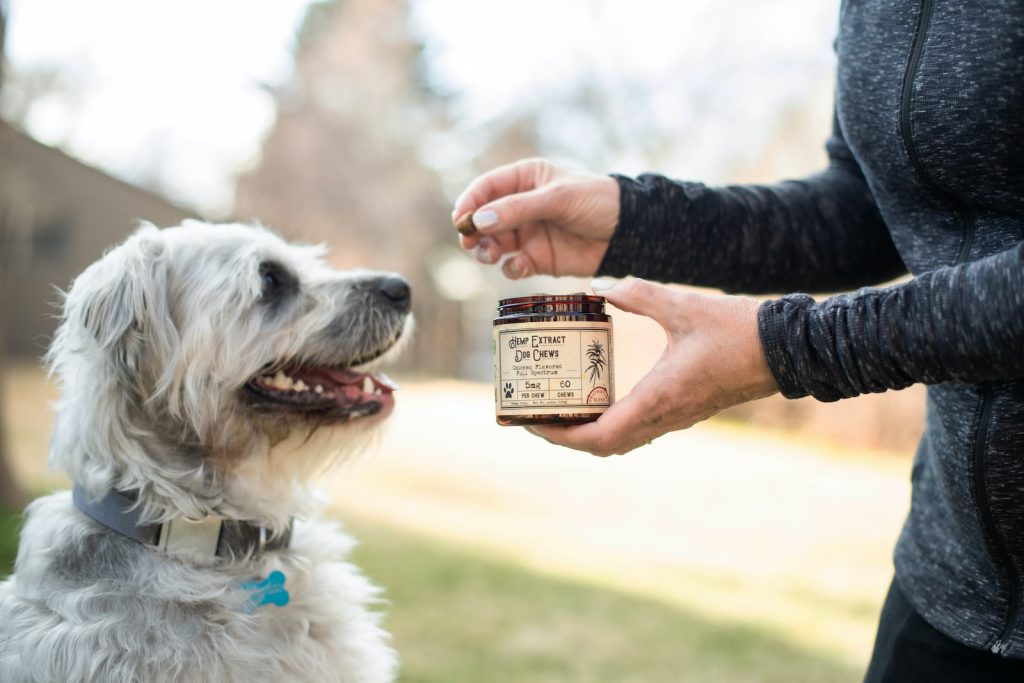This post is also available in:
Français (French)
Español (Spanish)
How do you prepare for a new dog? In this exciting and rewarding experience, you need to consider different factors, but it also comes with its fair share of challenges. Preparing and comprehending the process can help ensure a seamless transition of your new pet into their home. This comprehensive guide will delve deep into various essential aspects for successfully integrating your new family member.
We’ll discuss gathering necessary supplies such as appropriate leashes, collars, ID tags, and grooming essentials to ensure your pet’s comfort and safety. Additionally, setting up a welcoming environment within your home is crucial in helping them adjust quickly.
Establishing routines explicitly tailored to your dog’s needs will provide structure while promoting bonding between you both. Furthermore, introducing them to other family members or pets requires careful planning so everyone coexists harmoniously.
Lastly, training and socialization form the foundation of good behavior; thus, adopting reward-based methods from day one is vital. Finally, promptly addressing behavioral issues ensures long-term happiness for all involved parties.
Essentials on how to prepare for a new dog
Choose the Right Leash and Collar for Your Dog’s Size and Breed
Selecting an appropriate leash and collar is crucial in ensuring your dog’s safety while providing comfort during walks or playtime. When making this decision, consider factors like size, breed-specific requirements (e.g., wide collars for greyhounds), material durability (nylon vs. leather), etc. For more guidance on choosing the perfect leash and collar combination for your pup.
Importance of an Up-to-Date ID Tag with Contact Information
An up-to-date ID tag attached to your dog’s collar is vital, as it can get lost or separated from you at any point (we hope this never happens). The tag should include their name and current contact information, such as phone numbers or email addresses where someone can reach you if they find them wandering alone outside. Microchipping can provide extra protection for your pet – learn more about its advantages here.
Grooming Essentials to Keep Your Pet Clean and Comfortable
- Brushes & Combs: Choose brushes suitable for their coat type (e.g., slicker brushes for long-haired breeds).
- Nail Clippers: Trim their nails to prevent discomfort or injury during playtime.
- Shampoo & Conditioner: Opt for gentle, pet-safe products that cater to specific skin/coat needs (e.g., hypoallergenic options).
- Toothbrush & Toothpaste: Regular dental care is essential in maintaining overall health – use canine-specific toothpaste and a soft-bristled brush.
Gathering the right supplies is vital in preparing your home for a newly adopted dog. With these essentials, you can create a safe and comfortable environment to help ensure their health and happiness as they transition into their forever home. Setting up your home environment to meet your pet’s needs is just as crucial – it helps establish good habits from day one.
Key Takeaways:
Before bringing your newly adopted dog home:
- Gather supplies such as a leash, collar, ID tag with contact information, and grooming essentials.
- Choose the right leash and collar for your dog’s size and breed while ensuring the ID tag is up-to-date to prevent loss or separation.
- Keep your pet clean and comfortable by using gentle pet-safe products for grooming purposes.
Setting Up Your Home Environment
Creating a welcoming environment is crucial in helping your new adopted dog adjust to its surroundings. Set up designated areas for eating, sleeping, playing, and eliminating waste while removing or securing potential hazards. By following these steps, you can ensure your furry friend feels comfortable and at home.
Establishing Feeding Stations with Appropriate Food Dishes
Set up feeding stations with appropriate food dishes to ensure proper nutrition and hygiene for your rescue dog. Choose the correct type of bowl based on the size of your dog to avoid any discomfort during mealtime. Place the bowls in an easily accessible area where they won’t be disturbed by foot traffic or other pets and don’t gather too much dust.
Providing a Cozy Bed or Crate for Restful Sleep
A good night’s sleep is essential for both humans and dogs alike. Invest in comfortable dog bed, crate, or soft blankets to create a cozy spot where your pet can rest undisturbed. Ensure you locate this space away from high-traffic areas so that they feel safe when it’s time to relax.
Designating Play Zones Stocked with Toys Suited to Their Needs
- Puzzle toys: Stimulate their mind by providing puzzle toys that challenge them mentally.
- Tug-of-war toys: Engage in interactive play sessions using tug-of-war toys, which can help build a strong bond between you and your dog.
- Chew toys: Satisfy their natural urge to chew with durable, safe chew toys that promote dental health.

Ensuring Proper Elimination Spots Like Pee Pads or Outdoor Areas
To maintain cleanliness in your home:
- Designate specific areas for your adopted dog for their necessities.
- Consider using pee pads, artificial grass patches, or litter boxes for those living in apartments or homes without yards.
- If you can access an outdoor area, train them to use designated spots by consistently taking them there during potty breaks and rewarding successful eliminations.
In addition to these steps, ensure all potential hazards are removed or secured within the home environment. To start, keep toxic plants out of reach and secure electrical cords so they don’t pose a risk to curious pups.
Establishing a suitable living space is essential when introducing a pup to your abode. Once the right home environment is in place, establish a routine for your dog to ensure their health and well-being can commence.
Key Takeaways:
When bringing home a newly adopted dog, it’s essential to create a welcoming environment by setting up designated areas for eating, sleeping, playing, and eliminating waste. The feeding stations should have appropriate food dishes, provide a cozy bed or crate for restful sleep, and designate play zones with toys suited to their needs. Additionally, ensure proper elimination spots like pee pads or outdoor areas are available while removing any potential hazards from the home environment.
Developing A Routine For Your New Dog
Consistency is vital when it comes to helping dogs adapt quickly. Develop routines around feeding times and walk/playtime sessions outside of mealtime hours so they can learn what’s expected from them more easily over time, which helps reduce stress levels too.
Scheduling consistent meal times throughout the day
Establish a regular feeding schedule for your newly adopted dog by providing meals at the same time each day; it’s recommended that you leave the bowl of food for at most 30 minutes so the food does not attract pests or gather too much dust. This routine will help them adjust to their new environment and understand when to expect food. Consider consulting with your veterinarian or referring to guidelines provided by you on how much and how often you should feed your dog based on its age, size, and activity level.
Daily exercise routine
A well-exercised dog is typically happier and healthier. Create an exercise routine that suits your dog’s breed, age, energy level, and physical abilities. This routine might include daily walks in the neighborhood or nearby parks, playing fetch in a fenced yard or off-leash area. Be sure to consider any specific needs related to their past experiences; for example, rescue dogs living primarily outdoors may require additional support adjusting to indoor environments initially before fully embracing life inside homes alongside human companionship once again. Here is a recommended daily exercise routine that will keep you active and healthy.
- Morning walk: Start each day with a brisk walk around the block or visit a local park.
- Afternoon playtime: Engage in interactive games like fetch or tug-of-war to keep your dog entertained and physically active.
- Evening stroll: Wind down the day with a leisurely walk, allowing your dog to explore and sniff their surroundings at a relaxed pace.
Introducing Your Dog To Family Members And Other Pets
Gradual introductions between family members (including other pets) are essential in fostering positive relationships among everyone involved within this newly formed pack dynamic; remember, patience truly pays off here. Approach situations slowly, allowing space whenever needed – don’t force interactions but let things unfold naturally instead.
Strategies for Introducing Children Safely Without Overwhelming the Dog
To ensure a smooth introduction between your new adopted dog and children, follow these steps:
- Talk to your kids about how to approach the dog gently and calmly. Explain that sudden movements or loud noises can scare the dog.
- Supervise all interactions closely, especially during initial meetings.
- Instruct children not to disturb the dog while it’s eating or sleeping.
- Show them how to properly pet and handle their new furry friend using gentle strokes along its back or sides, avoiding sensitive areas like ears and tail.
Facilitating Positive Interactions Between Existing Pets and the New Addition
If you have other pets at home, introduce them gradually as well. Here are some tips for successful introductions:
- Dog-to-dog introductions: Start with both dogs on leashes in neutral territory such as parks or quiet streets. Allow them time to sniff each other from a distance before getting closer if they seem comfortable. Praise calm behavior throughout this process.
- Dog-to-cat introductions: Keep the dog on a leash and allow the cat to observe from a safe distance or elevated position. Reward both animals for calm behavior, gradually decreasing the distance between them over time.
Monitoring Body Language To Ensure A Stress-Free Environment For All
Paying attention to your newly adopted dog’s body language is crucial in determining how they feel about their surroundings and interactions with family members or other pets. Look out for signs of stress such as:
- Tucked tail, ears back, or cowering posture.
- Lip licking, yawning, or excessive panting without physical exertion.
- Avoidance behaviors like turning away from people or other animals.
If you notice any of these signs during introductions, give your dog some space and try again later when they seem more relaxed. Patience is critical when helping your new furry friend adjust to their forever home.
Introducing your dog to family members and other pets is essential to ensuring a successful transition into their new home. Correct guidance can create a peaceful atmosphere for everyone involved. To further help your adopted pup settle into its forever home, training and socialization are critical components of success.

Key Takeaways:
Introducing a newly adopted dog to family members and other pets requires patience, gradual introductions, and close supervision. It is essential to teach children how to approach the dog gently and calmly while monitoring body language for signs of stress. People can achieve successful introductions between existing pets by starting with both animals on leashes in neutral territory and rewarding calm behavior.
Training And Socialization For Your Adopted Dog
Training and socializing your adopted dog is crucial in ensuring they become well-behaved, confident members of their new family. Start with basic obedience training while gradually exposing them to various environments, people, and other animals.
Establishing House Rules From Day One
It’s essential to establish house rules from the very beginning. Consistency is key when teaching your dog what behaviors are acceptable and which ones aren’t. Some standard house rules include not jumping on furniture or guests, not begging at the table during meal times, and designated areas where to play. Remember that patience is vital as your furry friend learns these new boundaries.
Importance Of Reward-Based Training Methods
Reward-based training methods have proven to be highly effective in teaching dogs desired behaviors while strengthening the bond between you both. This approach involves rewarding good behavior with treats, praise, or playtime rather than punishing undesirable actions – a technique known as favorable reinforcement. By using this method consistently throughout all aspects of training (obedience commands like “sit” or “stay”), you’ll create an environment where learning becomes fun instead of stressful.
- Treats: Use small pieces of high-value treats such as cooked chicken or cheese for rewards during training sessions.
- Praise: Verbal encouragement accompanied by physical affection (e.g., petting) reinforces positive behavior effectively.
- Playtime: Engaging in a favorite game after completing a command can be a powerful motivator for your dog.

Enrolling In Local Obedience Classes Or Seeking Professional Guidance If Needed
Local obedience classes can offer invaluable support and direction for those unfamiliar with canine instruction or feeling overwhelmed by the process. These group sessions provide an excellent opportunity for socialization while teaching essential skills under the supervision of experienced trainers. Consider seeking one-on-one assistance from a certified professional dog trainer (CPDT) if your adopted pet has specific behavioral issues that require specialized attention.
Training and familiarizing your newly-adopted pup is an essential part of aiding them in settling into their new home. By providing the proper direction, you can make sure your pet is content and in good health with you. By addressing any behavioral issues promptly, seeking professional help if needed, and providing consistent rules from day one of adoption, you will be setting up your pet for success.
Key Takeaways:
For your newly adopted pup to become a well-mannered part of the family, start with fundamental obedience training and socialization, then use reward-based techniques such as treats, praise, and playtime to reinforce good behavior. Establish house rules from day one and use reward-based training methods like treats, credit, and playtime to reinforce positive behavior. Consider enrolling in local obedience classes or seeking professional guidance if needed.
Addressing Behavioral Issues and Seeking Professional Help If Needed
Adopting a dog from a rescue organization like Bone Voyage Dog Rescue is a gratifying experience. Still, it’s important to remember that your new furry friend may come with some behavioral issues. These concerns can stem from past experiences or be part of their personality. Regardless of the cause, addressing these issues early on and seeking professional help will ensure a happy and harmonious home for you and your adopted dog.
Identifying Common Behavioral Concerns
Some common behavioral concerns for adopted dogs include:
- Separation anxiety occurs when a dog becomes highly anxious when left alone or separated from its owner.
- Fear-based aggression: A fearful dog may become aggressive as a means of self-defense when confronted with perceived threats.
- Possessiveness/resource guarding: Some dogs may guard food, toys, or items they perceive as valuable against perceived threats.
- Inappropriate elimination: Dogs not properly house-trained may eliminate indoors instead of outside or in designated areas like pee pads.
Tips on Managing These Behaviors Effectively
To effectively manage these behaviors in your newly-adopted pet, consider the following tips:
- Create consistent routines to provide structure and predictability for your dog. This routine can help reduce stress levels which can contribute to behavior problems.
- To reward for good behavior, don’t forget to use positive reinforcement techniques, such treats, a short game or praises.
- Be patient and understanding with your adopted dog. Remember that they may have experienced trauma or neglect, which can contribute to behavioral issues.
- For help addressing a specific topic, consult reputable resources like the ASPCA’s Dog Behavior Issues page or contact local trainers for guidance.
Frequently Asked Questions New Adopted Dog
What is the 333 rule for adopted dogs?
The 333 rule suggests that it takes an adopted dog approximately three days to decompress, three weeks to learn your routine and feel more comfortable, and three months to settle into their new home fully. This guideline helps adopters understand that adjusting to a new environment takes time and patience.
What to expect from a newly adopted dog?
Newly adopted dogs may exhibit shyness, anxiety, or confusion as they adjust. Expect changes in appetite, sleep patterns, and energy levels. Be patient with house training accidents and provide consistent feeding, exercise, and downtime routines. Gradually introduce them to family members and other pets while monitoring their body language.
Where should my dog sleep on the first night?
Your newly-adopted pup should sleep in a designated area, such as a cozy bed or crate near your bedroom. This rule provides dogs with comfort and security while still establishing boundaries. Keep them from sleeping on your bed the first night to ensure future clarity about sleeping arrangements.
How to make a new dog feel at home?
To make new dogs feel at home, create a comfortable space, establish a consistent routine, provide positive reinforcement, introduce them to family members and other pets gradually, engage in interactive play, and offer love, patience, and attention.
What should I do to prepare for a new dog?
- Research dog breeds to find the right fit for your lifestyle and home.
- Puppy-proof your living space by removing hazards and providing safe areas.
- Purchase necessary supplies, including food, water bowls, leash, collar, crate, and toys.
- Find a reputable veterinarian and schedule an initial check-up for your new dog.
- Set up a designated area for your dog’s bed or crate.
- Establish a routine for feeding, exercise, and potty breaks.
- Create a training plan and learn positive reinforcement techniques.
- Familiarize yourself with local dog laws and regulations.
- Prepare mentally and emotionally for the commitment and responsibilities of dog ownership.
- Consider obedience classes or hiring a professional trainer if needed.
Conclusion
As a pet parent, you are responsible for providing the necessary love and care for them to become an integral part of your family. With patience and dedication, you can help them develop good habits through training and socialization while addressing behavioral issues. Your commitment will be rewarded with years of unconditional love from your new four-legged friend.
Join us on our mission to save Mexican dogs and puppies by adopting a new furry friend from Bone Voyage Dog Rescue today! Your support will help give these animals the second chance they deserve at finding loving homes.
